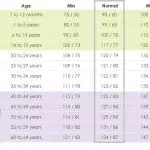

The correlation between the BMI and body fatness is fairly strong 1,2,3,7, but even if two people have the same BMI, their level of body fatness may differ 12. Top of Page How good is BMI as an indicator of body fatness? This would place the boy in the 95 th percentile for BMI – meaning that his BMI is greater than that of 95% of similarly aged boys in this reference population – and he would be considered to have obesity.įor more information and to access the CDC Growth Chartsįor adults, the interpretation of BMI does not depend on sex or age. For example, a 10-year-old boy of average height (56 inches) who weighs 102 pounds would have a BMI of 22.9 kg/m 2. Obesity among 2- to 19-year-olds is defined as a BMI at or above the 95 th percentile of children of the same age and sex in this 1963 to 1994 reference population. These percentiles were determined using representative data of the US population of 2- to 19-year-olds that was collected in various surveys from 1963-65 to 1988-94 11. The CDC BMI-for-age growth charts take into account these differences and visually show BMI as a percentile ranking. Children and teen’s BMI need to be age and sex-specific because the amount of body fat changes with age and the amount of body fat differs between girls and boys.

For more information about interpretation for children and teens, read – What is a BMI percentile and how is it interpreted? Is BMI interpreted the same way for children and teens as it is for adults?īMI is interpreted differently for children and teens, even though it is calculated using the same formula as adult BMI. For children and teens, the interpretation of BMI depends upon age and sex.


 0 kommentar(er)
0 kommentar(er)
